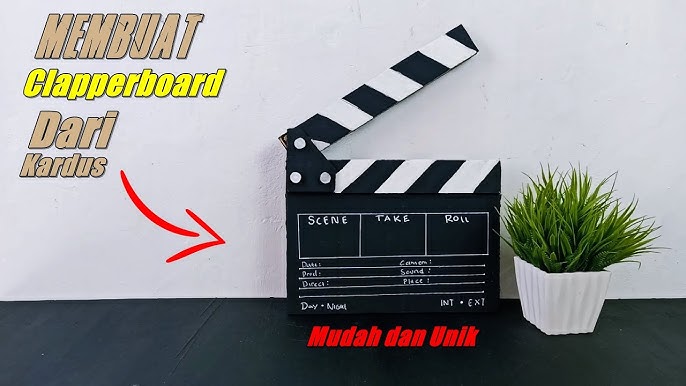
In the vast landscape of filmmaking, where creativity meets technicality, lies a humble yet indispensable tool that often goes unnoticed by audiences but holds immense significance in the world of cinema: the clapperboard. Also known as a slate or clapboard, this simple device serves as the silent herald of each scene, marking the beginning of a sequence with a sharp clap and providing vital information for post-production synchronization. While its appearance may seem mundane, its role in the filmmaking process is nothing short of pivotal.
Origins and Evolution
The origins of the clapperboard can be traced back to the early days of cinema, when filmmakers faced the challenge of synchronizing sound with moving images. Before the advent of digital technology, audio and visual elements were recorded separately, requiring precise synchronization during editing. To address this issue, the clapperboard emerged as a solution, providing a visual and auditory cue that could be easily aligned in post-production.
Early clapperboards were rudimentary, often consisting of little more than a wooden slate with handwritten scene and take numbers. Over time, they evolved to include features such as a hinged clapstick, which produced the distinctive clapping sound upon closure, and markings for additional metadata like the date, director, and camera information.
Functionality
At its core, the clapperboard serves two primary functions: to visually identify each scene and take and to provide an audible cue for synchronization. When a scene is about to be filmed, the clapperboard is held in front of the camera, clearly displaying essential information such as the scene number, take number, and sometimes the production title. The clapstick is then brought down, creating a sharp sound and a visual marker as the scene begins.
This synchronized action serves as a reference point for editors during post-production. By matching the visual and auditory cues of the clapperboard with corresponding audio and video tracks, editors can precisely align different elements, ensuring seamless transitions between scenes and maintaining continuity throughout the film.
Symbolism and Tradition
Beyond its practical utility, the clapperboard holds symbolic significance within the filmmaking community. For many, it represents the commencement of creative collaboration, as cast and crew come together to bring a scene to life. The act of clapping the board before each take is a ritualistic gesture, signaling focus, unity, and the shared pursuit of artistic excellence.
Moreover, the clapperboard embodies a sense of tradition and nostalgia in an industry that is constantly evolving. Despite advancements in technology that have revolutionized filmmaking techniques, the clapperboard remains a timeless symbol of cinematic craftsmanship, connecting contemporary filmmakers with a rich heritage of storytelling.
Variations and Innovations
While the basic design of the clapperboard has remained relatively unchanged over the years, there have been innovations and variations to accommodate the evolving needs of filmmakers. Modern clapperboards often feature digital displays for enhanced readability and programmable metadata storage for streamlined post-production workflows.
Additionally, specialized clapperboards have been developed for specific filming conditions and requirements. Waterproof clapperboards are designed for use in underwater or adverse weather conditions, while LED-lit clapperboards ensure visibility in low-light environments. Some clapperboards even incorporate timecode synchronization capabilities, further facilitating the editing process.
Cinematic Iconography
Beyond its practical functions on set, the clapperboard has transcended its utilitarian role to become an enduring symbol of cinema itself. Its distinctive appearance and sound are instantly recognizable to audiences worldwide, evoking a sense of anticipation and immersion in the cinematic experience.
The clapperboard has also permeated popular culture, appearing in countless films and television shows as a meta-referential device. From comedic mishaps involving mispronounced scene numbers to dramatic moments of tension as the clapstick strikes, the clapperboard has become ingrained in the collective consciousness of both filmmakers and audiences alike.
Conclusion
In the grand tapestry of filmmaking, where countless elements must align to create a cohesive narrative, the clapperboard stands as a silent sentinel, guiding the creative process with precision and clarity. Its humble presence belies its profound impact on the art of cinema, serving as a timeless symbol of collaboration, tradition, and craftsmanship.
As technology continues to advance and filmmaking techniques evolve, the clapperboard remains a steadfast companion, bridging the gap between past and present, tradition and innovation. While it may go unnoticed by audiences, its legacy endures in the hearts and minds of filmmakers who recognize its indispensable contribution to the magic of the silver screen.